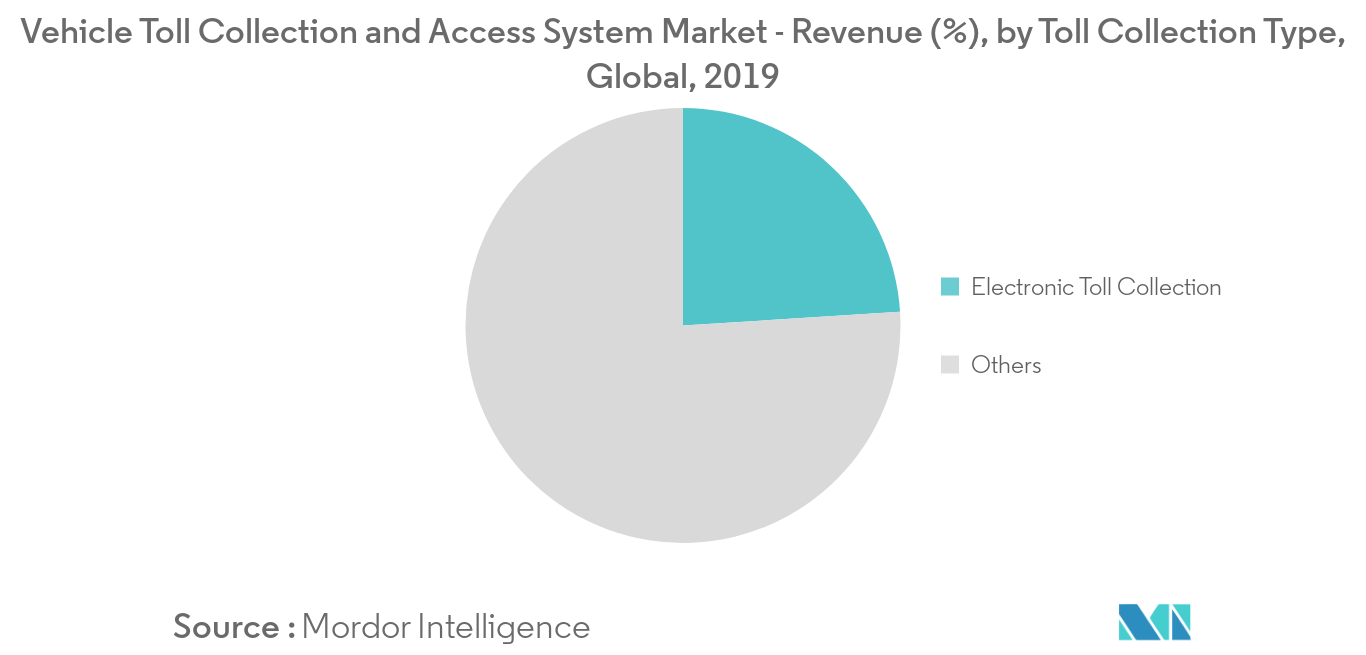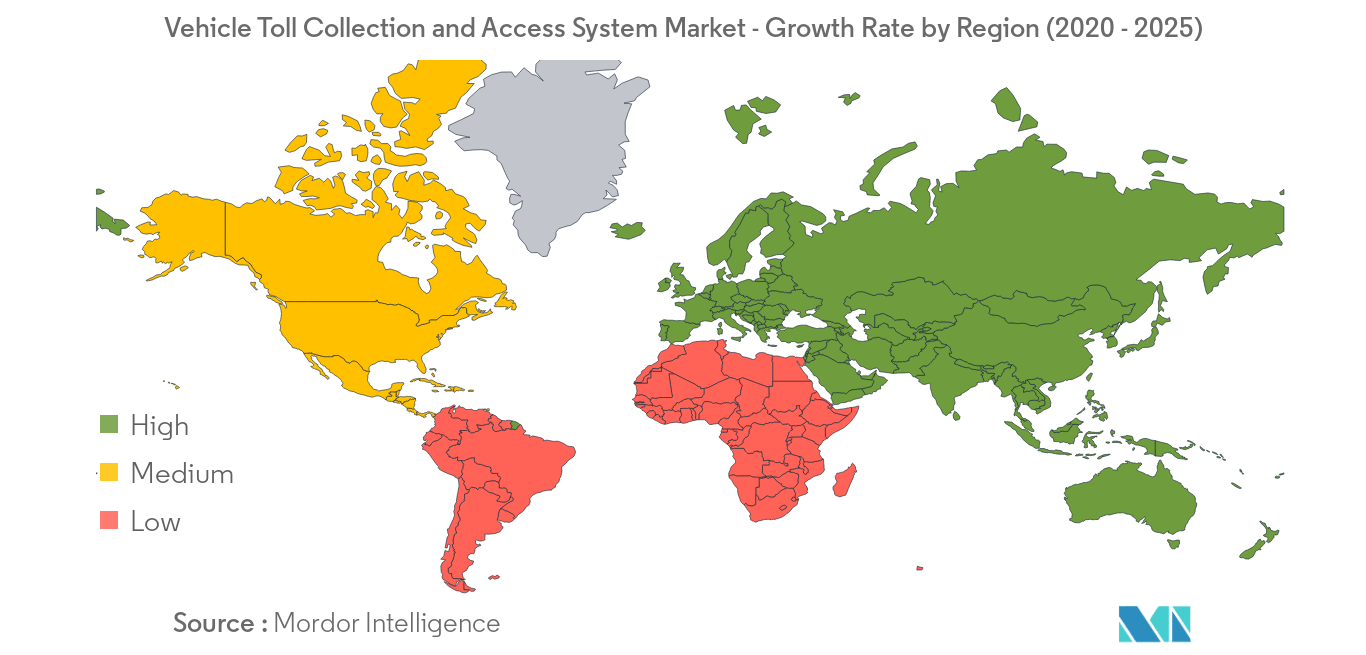Market Trends of Vehicle Toll Collection and Access System Industry
This section covers the major market trends shaping the Vehicle Toll Collection & Access System Market according to our research experts:
Electronic Toll Collection is Expected to Witness the Highest Growth Rate
- The electronic toll collection market is expected to witness the highest CAGR of over 10%, during the forecast period (2020-2025).
- Electronic toll collection helps predominantly in reducing traffic at tollbooths, by collecting tolls without cash and without requiring cars to stop. There are several technologies that are being used for collecting tolls electronically. The technologies are dedicated short range communications (DSRC) technology and automatic number plate recognition (ANPR).
- In DSRC technology, RFID (Radio-Frequency Identification) tags are used to scan the vehicle entry/exit at tollbooth, whereas ANPR uses camera to identify the vehicle license plate. The above technologies are used to automate the toll collection process and avoid long queues at toll booths. Additionally, these technologies not only improve vehicle theft detection, but can track vehicles crossing the signal and over speeding vehicles.
- Other advantages of this method for motorists include fuel savings and reduced exhaust emissions, by reducing or eliminating deceleration, acceleration, and waiting time. However, RFID tags have been popularly adopted across the world, as compared to other technologies. For electronic toll collection system, the trend of shifting from barrier based ETC to open road tolling (ORT) or fee flow tolling, has been gradually growing, especially in countries facing high traffic congestions at toll roads.

North America Dominated the Market, but Asia-Pacific is Expected to Witness the Highest Growth Rate
- North America dominated the global market, with a market share of more than 30%, in 2018. However, Asia-Pacific is expected to witness the fastest CAGR during the forecast period.
- In India, according to the Ministry of Road Transportation and Highways, the length of National Highways increased to 103,933 km in 2017, from 92,581 km in 2014. With growing concerns regarding traffic congestions, India launched FASTag, an ETC system using RFID technology, operated by the National Highway Authority of India (NHAI), in September 2014. In August 2017, NHAI announced that they were planning to launch FASTag at all 371 toll plazas across the National Highways, by October 2017. By the end of 2017, the country had nearly 365 toll plazas with a single lane dedicating to FASTag users.
- In November 2017, the Ministry of Road Transportation and Highways proposed to make FASTags mandatory to all new four-wheeler vehicles sold on or after December 1, 2017. As of 2017, the number of RFID FASTag reached 750,000 vehicles, and the government expected the number to reach 2.5 million by 2018. In July 2018, the above authority also proposed to mandate FASTags and vehicle tracking systems, for all commercial vehicles seeking a national permit.
- In China, in 2017, the country added nearly 8,130 km of expressways to its toll road networks, resulting in a toll road network at over 171,100 km, contributing to 3.6% of all roads, ~60% of which are highways. The country’s tollway system is extensive, as the toll varies from one expressway to another. For instance, the country charges a high toll of CNY 0.66 per kilometer, travelling through Jinji Expressway, while charging a lower toll of CNY 0.33 per kilometer through the Jingshi Expressway (in Beijing).


